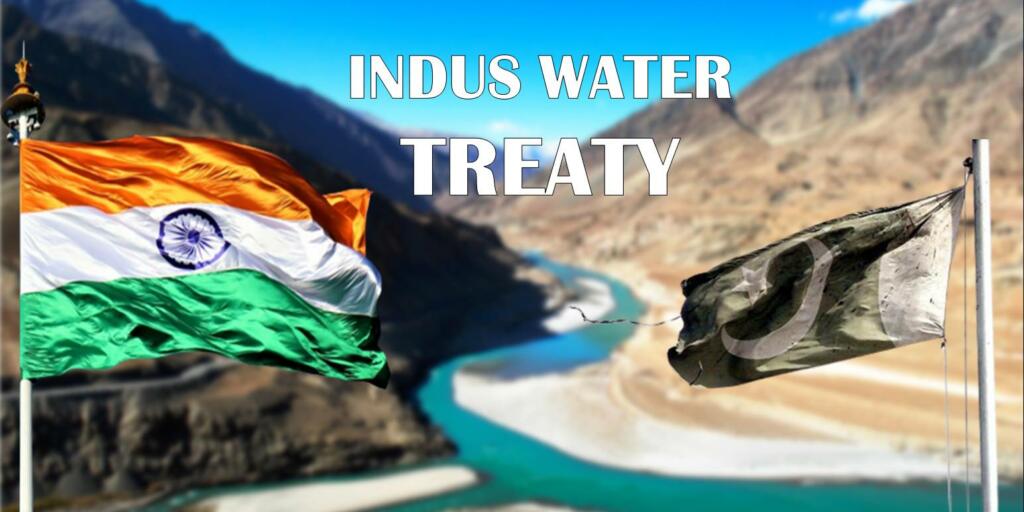Ever since he came to 7, Lok Kalyan Marg, PM Modi has been working hard to strengthen India’s strategic position at any cost. For this purpose, he has been analysing India’s strengths and weaknesses for the last 8 years. The Indus Water Treaty has been one of those documents deeply scrutinised by New Delhi. As it turns out, in spite of it being inherently anti-India, it contains enough provisions in it to cut down water supplies to Pakistan.
India finally stamps its authority on Indus Water Treaty
According to a report by Mint newspaper, India is going to curtail the amount of water flowing from Indus into Pakistan from India’s side. The Modi government is working on building 10 hydropower projects in Jammu and Kashmir (J&K) and Himachal Pradesh. After the completion, these projects will altogether provide 6.8 Gigawatts of renewable energy to the nation. The project is in line with the Modi government’s goal to produce 500 GW of renewable energy-based electricity by the end of year 2030.
For this purpose, the Indian government has entrusted National Hydroelectric Power Corporation (NHPC) with an overall budget of 68,000 crores. NHPC will handle the responsibility of finishing 9 projects. 8 out of these projects will be constructed in the Union territory of Jammu and Kashmir. In the valley, NHPC will construct a 1,000 MW Pakal Dul project, 850 MW Ratle project, 624 MW Kiru project, 540 MW Kwar project, 1,856 MW Sawalko project, 930 MW Kirthai-II, 240 MW Uri-I Stage-II and 260 MW Dulhasti Stage-II. In Himachal Pradesh, it will construct a 500 MW Dugar project.
Apprising the nation of the benefits of aforementioned projects, the Power Ministry said, “The construction activities of the project will result in direct and indirect employment to around 2500 people and will contribute to the overall socio-economic development of the Union Territory of J&K. Further, UT of J&K will be benefited with free power of around ₹4,548.59 crores and ₹4,941.46 crores with Water Usage Charges from Kwar Hydro Electric Project, during the project life cycle of 40 years.”
Read more: Pakistan will stop sponsoring terror in India only when the Indus Water Treaty is suspended
Project is in accordance with IWT
Meanwhile, the questions about whether these projects violate the Indus Water Treaty or not have started to prop up. One of these projects, Kiru, has already been objected to by Pakistan. In August 2021, Pakistan Indus Commissioner Syed Muhammad Meher Ali Shah had raised his objection about the project. In response, India’s Pradeep Saxena, India’s Indus Commissioner had categorically stated that the project complies with IWT.
This time, Abhay Kumar Singh, the NHPC director has also quashed any objection to the projects. Downplaying Pakistan’s objections, Singh said, “Pakistan keeps on objecting, but we have the Indus Waters Treaty. On the basis of the Indus Waters Treaty, we developed Kishanganga, Uri and others and on the basis of that treaty, we are developing these projects.”
Indus Water Treaty-another one of those Nehruvian era blunders
The fact that Pakistan can even object to the projects being laid down in India tells you how flawed the treaty is in the first place. As per the IWT, control over the water flowing in three eastern rivers of India- the Beas, the Ravi, and the Sutlej rivers with a mean flow of 33 Million Acre Foot (MAF) was given to India, and the control over the water flowing in the Indus, the Chenab and the Jhelum rivers with the mean flow of 80 MAF has been given to Pakistan. India can use only 20 percent of the total water carried by the Indus rivers system in a non-consumptive manner while Pakistan makes use of the remaining 80 per cent. However, previous Indian governments never used even that 20 percent of the share and allowed Pakistan to make full use of it.
Read more: The Indus Water Treaty: Another Nehruvian blunder that must be corrected
On the other hand, it is a boon for Pakistan. Even in 2022, Pakistan is heavily dependent on agriculture for its GDP. Agriculture accounts for 20 percent of its GDP and provides jobs to 50 percent of Pakistanis. However, Pakistan’s annual rainfall is around 240mm, much below the required sustainable level of 250mm. That is why it has been declared a dry country. It becomes imminent for Pakistan to fully utilise water available to it under IWT. Pakistan uses 93 percent of Indus water for irrigation purposes.
Read more: Can India give Pakistan a thirsty death?
Pakistan needs more water than ever
Even that is not proving to be good enough for the inefficient Pakistani administration. The establishment can efficiently utilise only around 39 percent of available water. On 25th May, Pakistan’s Indus River System Authority urged its state governments to improve the utilisation of water.
Even if India does not construct its projects, by 2025, Pakistan’s water shortage will be 67 percent of the total water it is getting through IWT. To put it in simple words, Pakistan needs more water than ever.
At the same time, India will be using more water for its development and that is why it has decided to not spare Pakistan on humanitarian grounds. The old rulebook of ‘You use our water to feed terrorists’ is not workable anymore.
